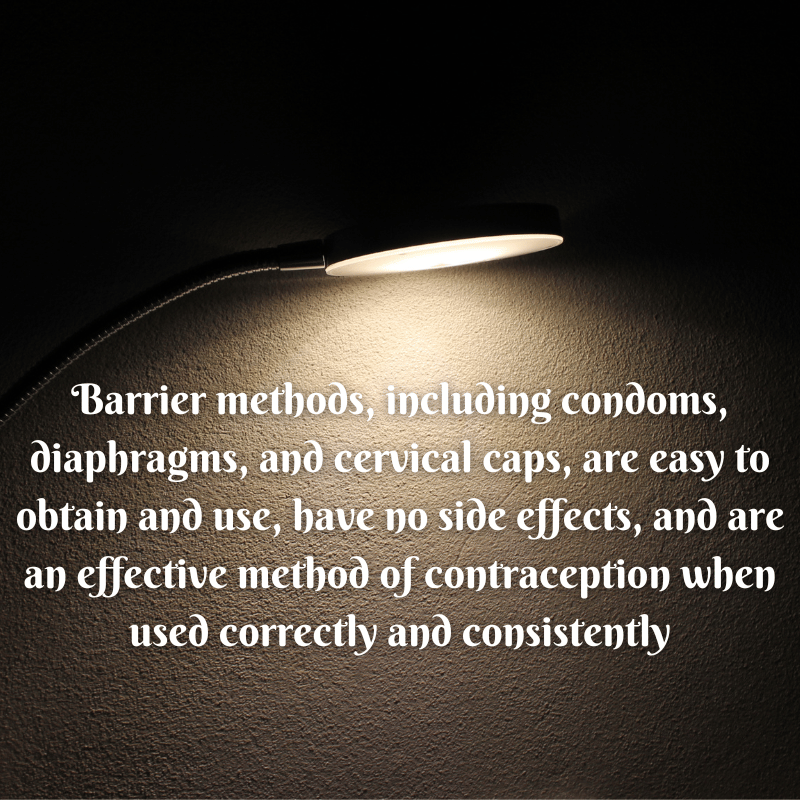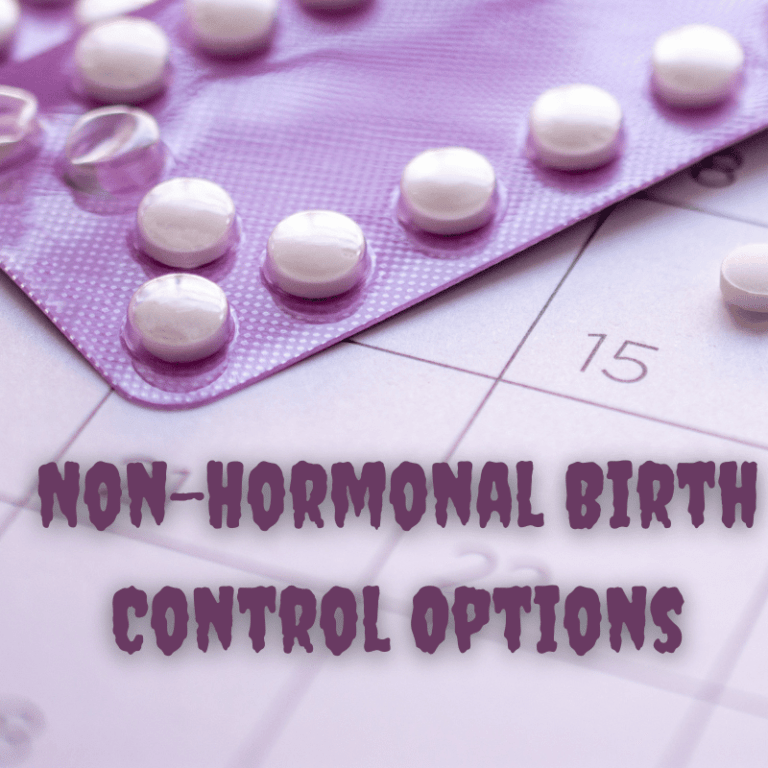When it comes to birth control, many people prefer non-hormonal options for a variety of reasons. Some may have experienced negative side effects from hormonal birth control, while others may simply prefer a more natural approach. Fortunately, there are many non-hormonal birth control options available on the market today. In this article, we'll explore some of the most popular and effective non-hormonal birth control options, including their benefits, drawbacks, and how to use them.
Table of Contents
Introduction to Non-Hormonal Birth Control
Before diving into the different types of non-hormonal birth control available, it's important to understand how they work. Unlike hormonal birth control, which uses synthetic hormones to prevent pregnancy, non-hormonal birth control works by either preventing sperm from reaching the egg or by blocking implantation of a fertilized egg in the uterus.
Barrier Methods
Barrier methods are a type of non-hormonal birth control that physically blocks sperm from reaching the egg. Some common types of barrier methods include:
Condoms
Condoms are a type of barrier method that are worn on the penis or inserted into the vagina to prevent sperm from reaching the egg. They are the only form of birth control that also provides protection against sexually transmitted infections (STIs).
Diaphragms
A diaphragm is a shallow, dome-shaped device that is inserted into the vagina and covers the cervix to prevent sperm from entering. Diaphragms are most effective when used in combination with spermicide.
Cervical Caps
Similar to diaphragms, cervical caps are also inserted into the vagina and cover the cervix to prevent sperm from entering. They are smaller and more flexible than diaphragms and are also used in combination with spermicide.
Natural Family Planning
Natural family planning is a method of birth control that involves tracking your menstrual cycle and abstaining from sex during the fertile window when you are most likely to get pregnant. There are several different methods of natural family planning, including:
Basal Body Temperature Method
The basal body temperature method involves taking your temperature every morning before getting out of bed to track changes in your body temperature throughout your menstrual cycle. This method can help you determine when you are most fertile and when to avoid having sex.
Cervical Mucus Method
The cervical mucus method involves tracking changes in the amount and consistency of your cervical mucus throughout your menstrual cycle. This can help you determine when you are most fertile and when to avoid having sex.
Calendar Method
The calendar method involves tracking the length of your menstrual cycle to determine when you are most likely to ovulate. This method is less reliable than other natural family planning methods because it assumes that you have a regular menstrual cycle.
Copper IUD
The copper IUD is a small, T-shaped device that is inserted into the uterus to prevent pregnancy. It works by releasing copper ions that are toxic to sperm, preventing fertilization. The copper IUD is one of the most effective non-hormonal forms of birth control, with a failure rate of less than 1%.
Sterilization
Sterilization is a permanent form of birth control that involves either blocking or cutting the fallopian tubes in women or the vas deferens in men. This prevents sperm from reaching the egg, effectively preventing pregnancy.
The Copper IUD: A Highly Effective Non-Hormonal Option
The copper IUD is one of the most effective non-hormonal birth control options available. It is a small, T-shaped device that is inserted into the uterus by a healthcare provider. The copper IUD works by preventing fertilization of the egg and by changing the lining of the uterus to prevent implantation of a fertilized egg. It can last for up to 10 years and is a good option for women who want long-term birth control that is non-hormonal.
However, the copper IUD may cause heavier periods and cramping, especially in the first few months after insertion. It is also important to note that the copper IUD does not protect against sexually transmitted infections.
Barrier Methods: Condoms, Diaphragms, and Cervical Caps
Barrier methods of birth control, such as condoms, diaphragms, and cervical caps, are non-hormonal options that work by preventing sperm from reaching the egg. Condoms are the most commonly used barrier method and also provide protection against sexually transmitted infections.
However, barrier methods are less effective than hormonal methods or the copper IUD and may interrupt sexual activity. They also require proper use and may cause irritation or allergic reactions.

Natural Family Planning: A Hormone-Free Method
Natural family planning, also known as fertility awareness methods, involves tracking a woman's menstrual cycle and identifying the days when she is most fertile. This method is hormone-free and has no side effects. It can be highly effective when used correctly, but requires a lot of effort and commitment.
However, natural family planning may not be suitable for women with irregular periods or those who are not able to consistently track their cycle.
Sterilization: A Permanent Option
Sterilization is a permanent form of birth control that involves either a tubal ligation for women or a vasectomy for men. This method is highly effective and does not involve hormones, but it is also irreversible.
It is important to note that sterilization should only be considered by individuals who are certain they do not want to have children in the future.
Finding the Best Non-Hormonal Birth Control Option for You
Non-hormonal birth control options offer a variety of choices for women who prefer not to use hormonal birth control methods. However, it is important to discuss the potential risks and benefits of each method with a healthcare provider to determine the best option for your needs.
By considering factors such as effectiveness, side effects, and convenience, you can choose the non-hormonal birth control option that is right for you and your lifestyle.
Lactational Amenorrhea Method (LAM): A Natural Option
LAM is a natural birth control method that is based on the temporary infertility that can occur when a woman is exclusively breastfeeding her baby. This method can be highly effective during the first six months after giving birth if certain conditions are met, such as frequent breastfeeding and no menstrual bleeding.
However, LAM is not a reliable long-term birth control option and is only effective for a limited time. It is also important to note that this method does not protect against sexually transmitted infections.
Emergency Contraception: A Backup Option
Emergency contraception, also known as the morning-after pill, is a form of birth control that can be used after unprotected sex or contraceptive failure. There are two types of emergency contraception: the copper IUD and the hormonal pill.
The copper IUD can be inserted up to five days after unprotected sex and is highly effective at preventing pregnancy. The hormonal pill, which is available over-the-counter in many countries, must be taken within 72 hours after unprotected sex.
However, emergency contraception should not be used as a regular form of birth control and may cause side effects such as nausea and vomiting.
Conclusion
Non-hormonal birth control options are a great choice for individuals who are looking for a natural or hormone-free approach to birth control. From barrier methods to natural family planning and the copper IUD, there are many different options available. It's important to talk to your healthcare provider about which method may be best for you.
FAQs
What are the most effective non-hormonal birth control options?
The most effective non-hormonal birth control options include the copper IUD, which has a failure rate of less than 1%, and natural family planning methods when used correctly.
Are non-hormonal birth control options safe?
Non-hormonal birth control options are generally considered safe, but as with any form of birth control, there are potential risks and side effects. It's important to talk to your healthcare provider about the potential risks and benefits of each method.
Can I use non-hormonal birth control while breastfeeding?
Many non-hormonal birth control options are safe to use while breastfeeding, but it's important to talk to your healthcare provider to determine the best method for you.
Do non-hormonal birth control options protect against sexually transmitted infections?
Most non-hormonal birth control options, with the exception of condoms, do not provide protection against sexually transmitted infections. It's important to use condoms in addition to other forms of birth control to reduce the risk of STIs.
Are there any side effects to using non-hormonal birth control?
Some non-hormonal birth control options, such as the copper IUD, may cause heavier periods or cramping. Barrier methods may also cause irritation or allergic reactions. It's important to talk to your healthcare provider about any potential side effects before choosing a method of birth control.

Comments are closed.